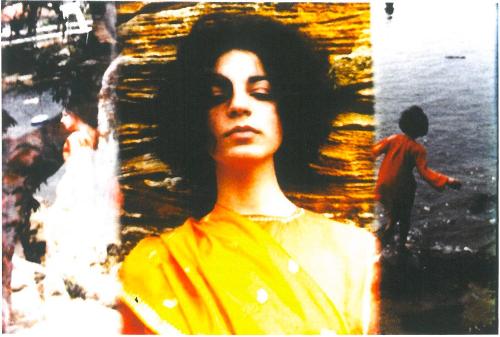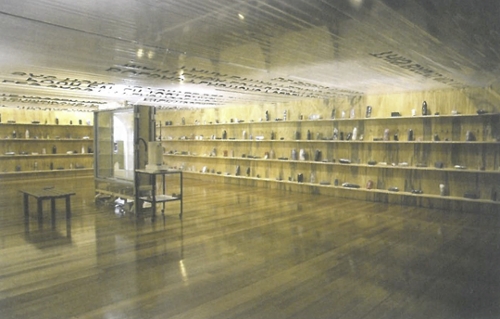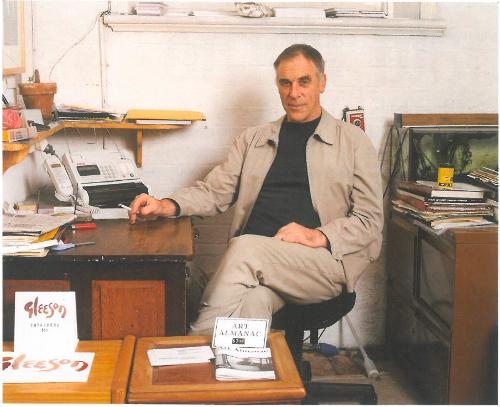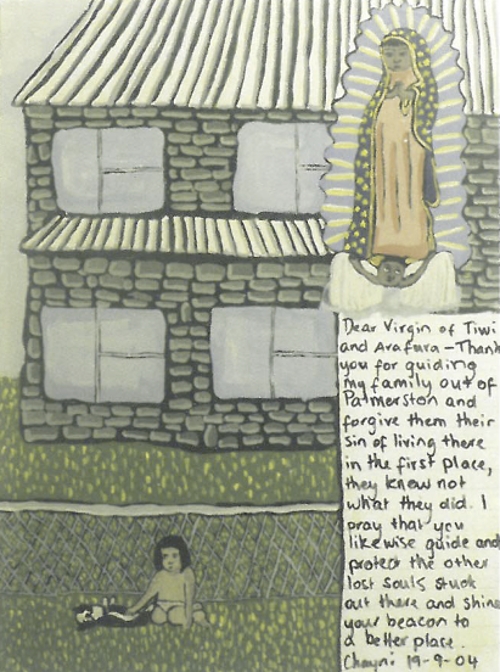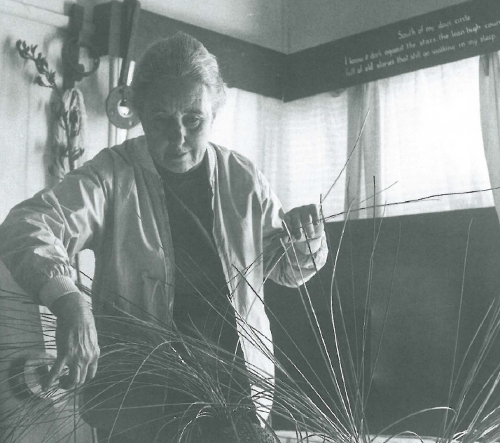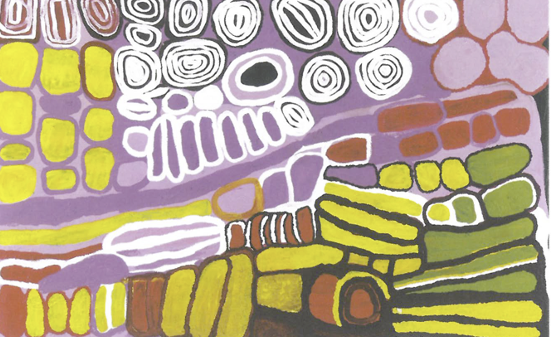
Irrunytju Arts is located in a remote corner of Australia, 12km from where the borders of South Australia, the Northern Territory and Western Australia converge. Also known as Wingellina, the land surrounding Irrunytju is harsh and hot: the hills are low and rain is scarce. From all appearances it's barren country; hardly conducive to life, let alone art, but just right for mining or nuclear testing (the country of the Anangu people at Irrunytju is within fallout range of Woomera and Maralinga).
Yet, since its foundation in 2001, the artists at Irrunytju Arts have been producing the most extraordinarily vital paintings of this land, and the culture and dreaming (tjukurpa) inseparable from it. In Irrunytju's first exhibition at Raft Artspace, Darwin, this vitality was evident. Featuring eleven works from six senior artists - Anmanari Brown, Patju Presley, Ngiyu Watson, Nyukul Dawson and Tjuruparu Geoffrey Watson - there was a tangible joy in the works with their bright acrylic colour and free contemporary painting techniques.
Take, for example, the work of Anmanari Brown. Brown paints the Minyma Tjuta (Seven Sisters) tjukurpa: an epic journey of seven sisters, pursued by a wati kula-kula (lustful man) across Central Australia. In her two paintings Brown depicts features of the landscape the sisters created on their journey and uses symbols, such as parallel lines, to represent the girls. There is a lush layering of paint and an exuberant use of colour. A work by Brown's husband Nyakul Dawson is also concerned with a major tjukurpa, Minyma Kutjara (Two Sisters), the story of another epic journey and the creation of country. Dawson intuits it using repetitive motifs and dot work. In doing so he tells the tjukurpa and creates a map of the land - they are one and the same. Kuntjil Cooper also paints this tjukurpa. Using vivid yellow and orange hues, Cooper paints with joyous sensuality; a mood usually associated with more conventional notions of 'paradise' than Outback Australia.
Quite distinct from these works is the hypnotic line work of Patju Presley's Apanyin and Tjuruparu Geoffrey Watson's Lizard Woman, with its clearly identifiable figure. Watson is a leading storyteller at Irrunytju and the narrative of this tjukurpa - the slaying of an evil Lizard Woman is the clearest of all the paintings. All these artists, by marrying the contemporary and the traditional, are effectively conduits between past and present for the anangu. For their community they perform an important function - by painting the country they keep their connection with it alive.
As all true art does, these paintings work on a level beyond language and the grasp of mere intellect. However, understanding the symbols and mythology inherent in them lends a whole new dimension to their viewing. Circles or linework can be as powerful an image for those who understand their meaning as the Christian cross, the Nazi swastika, the drover's wife, or, more prosaically, the green, red and yellow of a set of traffic lights.
Accompanying the exhibition is irrunytju arts, a small book by Mary Knights, former coordinator at Irrunytju. It is a clear, concise introduction to the painters, their work and the visual language they employ. To begin to be able to read these paintings is to begin to be able to understand the land itself: the country is the mythology and the mythology is the country. It becomes a different land -- its hills and rockholes become spiritual monuments; a rich and sacred place... all within nuclear fallout range.
The book irrunytju arts is available from Irrunytju Arts: www.irrunytju.com.au

